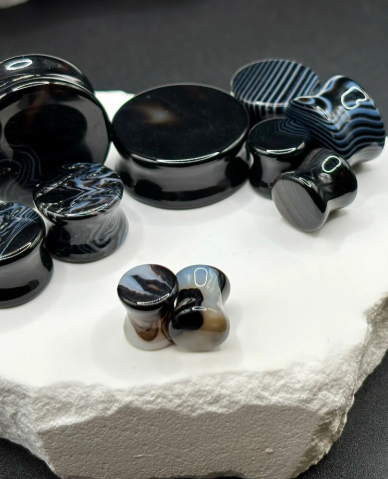When it comes to body modification, ear stretching is a popular and expressive form of self-styling. But as with any form of modification, precision and sizing are essential. For those reaching larger sizes in their stretching journey, choosing between a 22mm gauge and a 25mm gauge is an important decision—not just for fit, but also for comfort, healing, and long-term ear health.
Whether you’re sizing up gradually or considering a new plug or tunnel style, this guide will help you understand the differences between 25mm gauges and 22mm gauges, how to choose the right size for your ears, and what factors to consider when upgrading or customizing your look.
Understanding the Basics: Gauge to Millimeter Conversion
In body jewelry, “gauge” refers to the thickness of the jewelry inserted into a piercing. The larger the gauge number, the smaller the actual diameter. Once you exceed 00g (approximately 10mm), the sizing typically transitions to millimeters for clarity.
Here’s where 22mm and 25mm fit on the size scale:
- 22mm Gauge = Approximately 7/8 inches
- 25mm Gauge = Approximately 1 inch
Both fall into the category of large-gauge body jewelry, often worn by experienced individuals who have gradually stretched over time and now wear plugs or tunnels as a form of permanent adornment.
What’s the Difference Between 22mm and 25mm Gauges?
Though the numerical difference is only 3 millimeters, that’s quite significant when dealing with soft tissue like stretched earlobes. Here’s how these two sizes compare in practical terms:
Visual Impact
- 22mm gauge plugs still appear large and noticeable, but they maintain a slightly more compact look.
- 25mm gauges are considered a milestone size, often admired for their bold, rounded appearance. They’re a common target size for those seeking that full one-inch display.
Stretching Difficulty
- Moving from 22mm to 25mm involves a 13.6% increase in diameter, which is a big leap for the skin to accommodate safely.
- Most stretchers use intermediate sizes or wear tapers gradually over a period of weeks or months before attempting a 25mm fit.
Jewelry Availability
- Both sizes have a decent range of styles and materials, including wood, glass, stainless steel, silicone, and stone.
- 25mm gauges offer a wider variety, as many body jewelry makers cater to the symbolic “1-inch” stretch size.
Which Gauge Size Is Right for You?
The answer depends on your current ear size, aesthetic goals, and how your ears have responded to past stretching.
Choose 22mm gauge if:
- You’ve just reached 20mm and want to stretch cautiously
- You prefer a large size but not the full “1-inch” stretch
- Your skin is thin, sensitive, or has scar tissue from previous issues
- You value subtlety over boldness
Opt for 25mm gauges if:
- You’ve successfully worn 22mm for several months with no irritation
- You’re confident in your stretching technique and aftercare
- You want maximum visibility and style variety
- You’re aiming for a long-term or final size
How to Safely Stretch from 22mm to 25mm
If you’re at 22mm and considering 25mm, patience is critical. Rushing the process increases the risk of tearing, blowouts, or permanent damage. Here’s how to do it safely:
- Wait at least 6–8 weeks after your last stretch before attempting a new size. More time is better.
- Use intermediate sizes such as 23mm or 24mm if available. These help your ears adjust gradually.
- Consider soft tapers or dead stretching with single-flared plugs.
- Keep your ears well-lubricated with vitamin E oil or jojoba oil during the stretch.
- Avoid stretching when your ears are inflamed, dry, or healing from any trauma.
It’s always a good idea to consult experienced body piercers or professional stretchers if you have concerns about sizing or stretching technique.
Final Thoughts
Choosing between a 22mm gauge and a 25mm gauge isn’t just a matter of aesthetics—it’s about what your body can comfortably and healthily support. For some, 22mm is the perfect balance between bold expression and ease of care. For others, reaching the full 25mm gauges size is a personal milestone and visual statement worth the wait.
Whichever you choose, remember that sizing up should always be a gradual, well-informed process. With proper technique, patience, and high-quality materials, you can ensure that your stretch remains safe, stylish, and uniquely yours.


